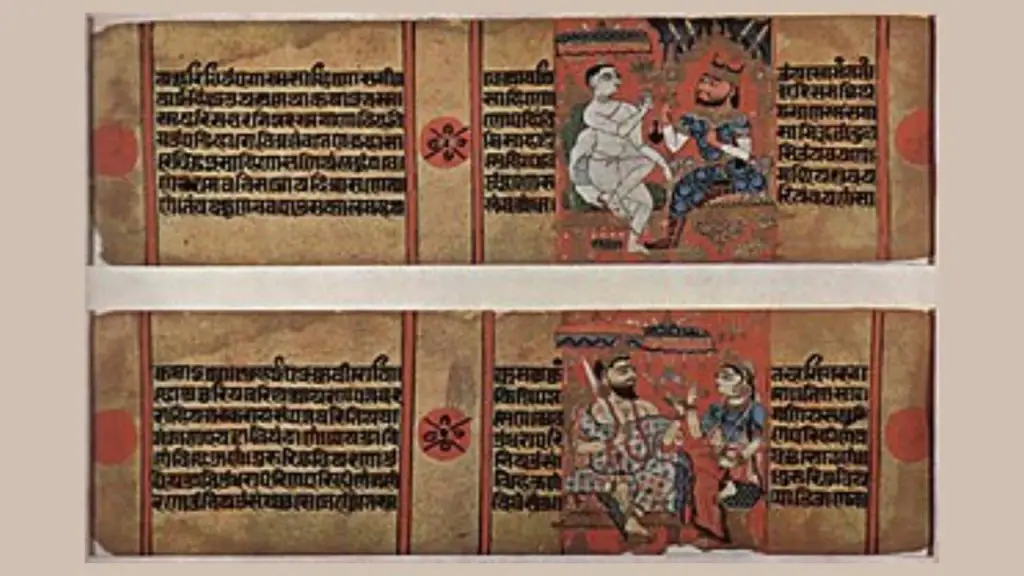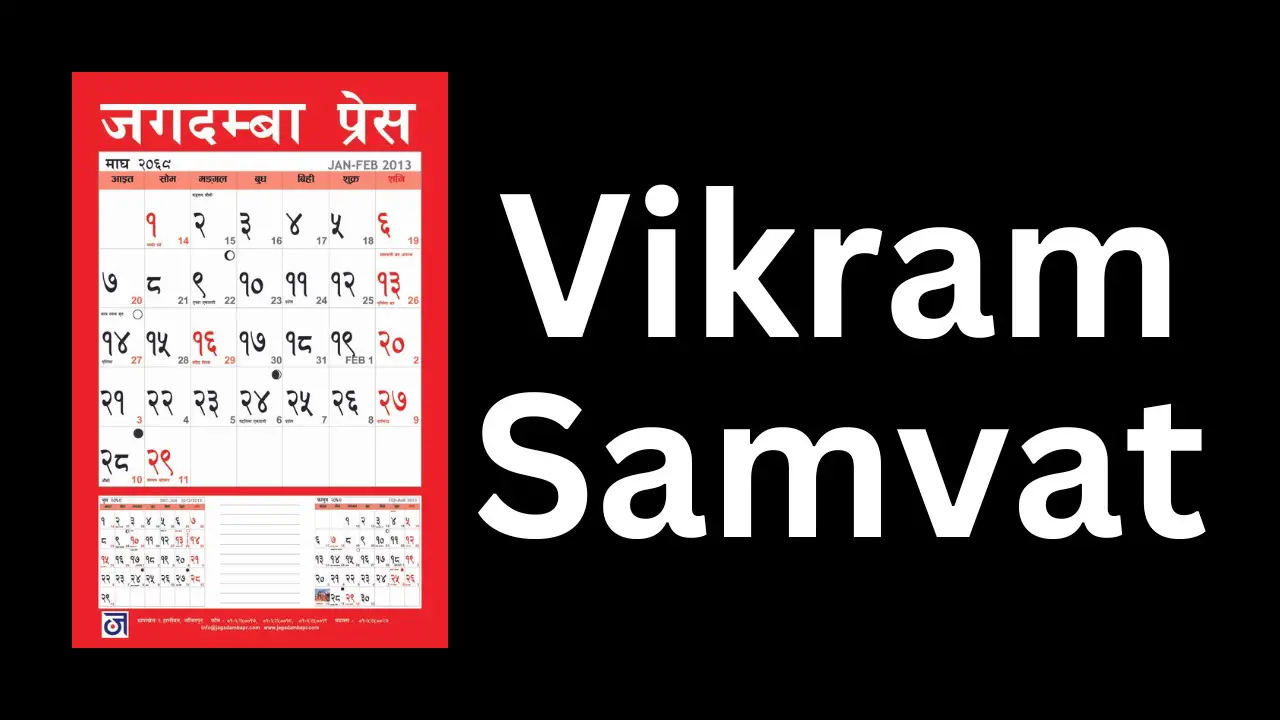Nepal has a rich history and culture, and one of the ways this is reflected is through its calendar system. Vikram Samvat is a Hindu lunar calendar widely used in South Asia, in countries like Nepal and India. The calendar is different from the Gregorian calendar that many western countries use! The main difference is it follows the moon cycles, and the number of days in a month can fluctuate from year to year.
In this article, I explore the origins, features, and influence of the Vikram Samvat Calendar. Let’s start by looking at the origins of the Hindu Calendar.
Origins of Vikram Samvat:
Vikram Samvat is a calendar system that dates back to ancient times. It is named after King Vikramaditya, a legendary emperor who, according to legend, founded the calendar to mark the beginning of his reign. He ruled over the Indian subcontinent during the first century BCE and founded the calendar system in 57-56 BCE.
The calendar is widely used in India and Nepal and plays an important role in religious and cultural events. Today, Vikram Samvat is widely used in Nepal, where it is known as the Nepali calendar and is the official calendar of the country.

According to legend, King Vikramaditya was a wise and just ruler who founded the calendar to commemorate his victory over the Sakas, a group of Indo-Scythian invaders. The calendar is based on a lunar system, with each month beginning on the day of the new moon. The months are named after the zodiac signs, each with a specific religious significance.
It is believed that the King used this calendar to track important events and ceremonies during his reign, and over time it became an important part of Hindu tradition.
Vikram Samvat Calendar Compared with the English Calendar:
The Hindu calendar is just one of many calendars that are used in South Asia. Other notable calendars include the Gregorian calendar, the Hindu calendar, and the Islamic calendar. While there are similarities between these, there are also major differences in how they are structured and how they are used. For example, the Nepali calendar is closely tied to the moon’s cycles, while the Gregorian calendar is based on the Earth’s movement around the sun.
The Nepali date compared to the Gregorian Calendar (English Calendar) is 56 years ahead of the English Calendar, from December 15 to April 15, and April 16 to December 14, the year is 57 years ahead. Generally, the Nepali Calendar is about 56 years and 8½ months ahead of the English Calendar.
Influence on the Nepali Calendar
The Vikram Samvat calendar system has also had a significant impact on the Nepali calendar. The Nepali calendar is also a lunar calendar, and it is based on the Vikram Samvat system. The Nepali New Year, or Nepali Samvat, begins on the first day of Baisakh, typically in April.
The calendar is widely used in official and legal documents and is an important part of religious ceremonies and rituals. The calendar is also used to mark significant events in Nepali history. However, in recent years, with the continued westernization of Nepal, more and more people are using the English calendar for dates. This has a lot to do with Nepal’s economy being based on tourism and the importance of people understanding the English date.
Features of Vikram Samvat
The Vikram Samvat calendar has several unique features. For one, it is a lunar calendar based on the moon’s cycles, not the sun, as in the Gregorian calendar. The Vikram Samvat calendar also has 12 months, but the number of days in a month range from 29 to 32.
One of the key features of the calendar is its lunar nature, as it follows the moon cycles instead of the earth around the sun. By following the moon and the speed and nature of the sun, the calendar is considered to be one of the most scientific in the world. Additionally, it is typically 57 years ahead of the Gregorian Calendar, except from January to April, where it is only 56 years ahead – as New Year falls in April of each year.
It is also one of the two official calendars used in Nepal, alongside the Nepal Sambat. The calendar is used in India and uses lunar months and solar sidereal years. Similarly, the Nepali Bikram Sambel, introduced in 1901, also utilizes a solar sidereal year.
Impact on Religion and Festivals in Nepal
Religion plays an important role in Nepali society, and the Vikram Samvat calendar system has significantly impacted religious and cultural events in Nepal. Many festivals in Nepal, such as Dashain, Tihar, and Chhath, are celebrated according to the Vikram Samvat calendar. This means that the dates for each festival will change from year to year as they must align with the lunar cycle.
This can get difficult for people using the Gregorian Calendar as the dates are constantly changing – even Google gets confused sometimes, as it reported the wrong date for Holi in Nepal this year! This is understandable as each community has its own holidays and festivals. Making it difficult to keep track of all the different events!
To find out more about religion, check out my blog covering religion in Nepal!
FAQs: The Vikram Samvat Calendar
Below are some of the most frequently asked questions regarding the Hindu Calendar used in Nepal and other parts of South Asia.
The Vikram Samvat calendar was started in 56 BCE in the southern Hindu calendar system (amaanta) and 57–56 BCE in the northern system (purnimanta).
Like many other South Asian countries, Nepal uses the Vikram Samvat, an ancient calendar that King Vikramaditya of Ujjain started. The Vikram Samvat calendar system originates in an era called “Vikrama,” which is traced back to an inscription from 842 CE.
Yes, according to the Nepali calendar they are ahead 57 years. Nepal uses the Vikram Samvat Calendar which follows the lunar cycle, and is 57 years ahead of the Gregorian Calendar, except during Jan-Apr when it’s 56 years and eight months ahead.
The Saka Calendar comprises twelve months Chaitra, Vaishakha, Jyeshtha, Ashadha, Shravana, Bhadra, Ashwin, Kartika, Agrahayana, Pausha, Magha, and Phalguna. The Chhatra month commences on March 22 or 21 in a leap year.
It is 2079 in Nepal (2022/2023 Gregorian calendar) because They follow the Vikram Samvat calendar as the official calendar instead. This means Nepal is roughly 56 years and eight months ahead of the English Calendar.
The Vikram Samvat is followed by people practicing Hinduism and Sikhism from people of the Indian subcontinent. The calendar started in 57 BC and is the national calendar of Nepal and India.
Yes, Nepal follows the Vikram Samvat. It is one of the two official calendars used in the country.
Vikram Samvat: Understanding the Hindu Calendar
The Vikram Samvat calendar system has a long and rich history, and it continues to play an important role in religious and cultural events in India and Nepal. Especially as it has influenced the official Nepali calendar so greatly. Additionally, it means that the number of days in a month (29-32) continues to change, resulting in the dates of certain events changing as well.
Its lunar nature and close ties to Hindu tradition make it a unique and significant calendar system and one that is important for official events and holidays. The calendar is a unique piece of culture that defines Nepal. When you are visiting the country, just remember to check both calendars, as Nepal has a lot of different holidays and festivals, that might conflict with your plans.
